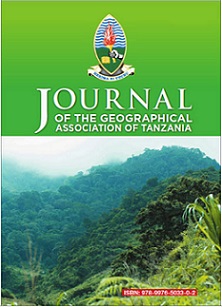Cyperus papyrus in Lake Victoria: Genetic Information, Utilisation and Resource Sustainability
Abstract
Many wetlands in the Lake Victoria basin are dominated by Cyperuspapyrus, which are very productive and, therefore, have an important role
both ecologically and socially. The increasing harvesting pressure of
papyrus threatens its future. Thus, a conservation approach was employed
to determine the intensity of the pressure and threat to the papyrus
diversity at clonal level. Eight microsatellite loci were used for analysing
the clonal diversity and genetic diversity of Cyperus papyrus in 6 swamps
of Mwanza bay (Tanzania) and 5 swamps of Nyanza bay (Kenya). From
304 individuals, we observed a total of 49 alleles in Mwanza bay and 44
alleles in Nyanza bay, a high clonal diversity (R = 0.64 to 1 Mwanza bay
and R=0.70 to 1 in Nyanza bay), and a high genetic diversity (HE) with an
average of 0.558 and 0.493 for Mwanza and Nyanza bay, respectively. The
analysis of molecular variance showed that most of the allelic variances
were within individuals. This resulted in a moderate differentiation (FST,
0.126 and Nm, 1.7) from all studied population in Lake Victoria. Gene flow
was high between populations within each bay of the Lake (Nm > 4). The
observed disturbance in the swamps showed no effects on any of the
papyrus diversity variables. The clonal diversity (R) was even higher in the
disturbed swamps than in pristine ones, with values ranging from 0.78 to 1
for disturbed, and 0.64 to 1 for pristine swamps. This explains that,
although it is a clonal plant, papyrus maintains sexual reproduction and
successful seed dispersal, making them resilient to even strong
environmental and anthropogenic disturbance.
Downloads
Published
2017-05-24
Issue
Section
Articles


